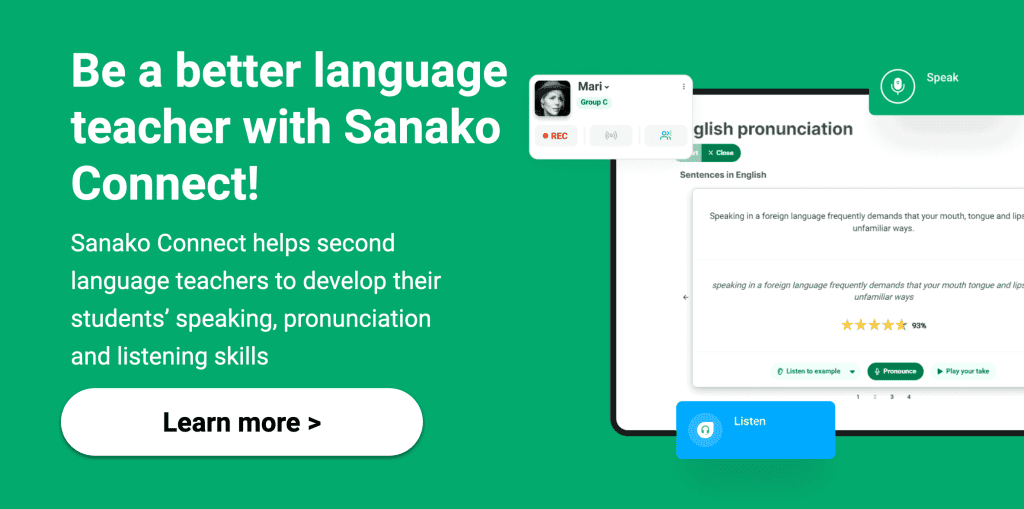One unexpected consequence of the COVID-19 pandemic appears to be a seismic shift in the behaviour of students in formal education settings. In the UK, for example, Ofsted, the national schools’ regulator, clearly identified in their 2023 Annual Report that disruptive behaviour in classrooms had become more common.
Educators have always known that their job entails working with a diverse range of students, each with their unique circumstances, motivation and challenges. While many students thrive in the classroom environment, there are an increasing number who present difficulties, disrupting the flow of lessons and hindering their own progress and that of their peers.
Effective classroom management skills are therefore an essential requirement for every language teacher. Yet many teachers have not received any training on how to do this or get little support from colleagues or their institution.
This blog post therefore identifies seven simple steps or strategies to help teachers to regain control of their classrooms. They include a combination of empathy, patience and strategic approaches to prevent minor misbehaviour from escalating into more significant disruption or conflict. Such timely interventions help maintain a calm and orderly learning environment, where all students feel engaged, respected and safe.
Step 1: Identify the challenging behaviour
In order to address challenging and inappropriate conduct, the first step is to identify and record the specific behaviours that are causing disruption.
- Observe and document: Pay close attention to students’ behaviour when they are in your classroom, keeping a record of the frequency, duration and intensity of any disruptive actions. Always include a summary of the context in which the behaviours occurred.
- Identify patterns: Analyse your observations to identify any patterns or triggers that may be contributing to the challenging behaviour. This could involve looking for specific situations, individuals or activities that consistently lead to disruptive episodes.
Step 2: Understand the underlying cause
Before addressing challenging behaviours, it’s crucial to understand why they are happening. Often, disruptive behaviour stems from underlying issues such as emotional distress, learning difficulties or a lack of engagement with the subject matter. Identifying these root causes can help teachers tailor their approach to address the specific needs of each student.
- Communicate with the student: Initiate open and honest conversations with the student to understand their view of their behaviour. Listen carefully to their concerns, frustrations and tease out any other issues they may be facing.
- Engage with parents or guardians: Collaborate with caregivers to better understand the student’s behaviour and to identify any factors that may be contributing to their difficulties in the classroom.
- Seek support from colleagues: If the student is exhibiting persistent or severe behavioural issues, consult with their tutor / mentor and, where available, school counsellors to understand any wider issues.
Step 3: Build a positive relationship
A positive and supportive teacher-student relationship is the cornerstone of effective classroom management. Investing time in building rapport with challenging students can significantly impact their behaviour and motivation for learning.
- Show genuine interest: Take an active interest in the student’s life, hobbies and aspirations. Try to find a mutual interest that can help to build a genuine connection.
- Acknowledge strengths and accomplishments: When you do see the student making positive contributions in the classroom, recognise and celebrate them. This positive reinforcement boosts their self-esteem and may encourage continued good behaviour.
- Spend time with them: It is important to make the time to work with challenging students one-on-one, providing them with tailored support and guidance. This personal approach helps strengthen the teacher-student relationship and address specific learning needs.
Step 4: Establish clear expectations
At the beginning of, and throughout the school year, establish and communicate clear expectations for students’ classroom behaviour. Take the time to ensure that all students understand them and are aware of the boundaries and consequences of misbehaviour.
- Make them visible: Display these expectations prominently so that no-one can say that they didn’t know what was expected of them.
- Be consistent: Apply the established rules and consequences consistently, regardless of the student or situation. This helps to maintain order and reinforces the importance of adhering to the agreed expectations.
- Address disruptions promptly: Address any disruptive behaviour immediately and directly. Don’t allow situations to linger and escalate.
Step 5: Implement positive reinforcement
This can be a powerful tool for encouraging desired behaviour and discouraging disruptive actions.
- Acknowledge and praise positive behaviours: Whenever the student exhibits positive behaviour, acknowledge and praise their actions promptly and specifically. Try to find the time to celebrate the student’s achievements and progress, both academic and behavioural.
- Implement a reward system: Simple yet effective, rewards for students do help to reinforce positive behaviours. Make it appropriate to your school and to your students, but they could involve a simple point system, verbal rewards, or more tangible rewards such as small prizes.
Step 6: Utilise differentiated instruction
Differentiated instruction caters to the diverse learning needs of all students, including those who are displaying problematic behaviours.
- Try different teaching methods: Challenging students sometimes need a different approach to a traditional “sage on a stage” teaching method. Why not try more hands-on activities, games, authentic language materials, digital technologies and focus on more collaborative and communicative learning tasks?
- Personalised learning plans: Adapt your teaching materials and activities to meet the individual needs and learning pace of the student. Consider whether you can better scaffold the learning content to help them to access and engage with the curriculum.
- Offer alternative assessment options: Give the student the opportunity to demonstrate their understanding in a way that suits their strengths and learning preferences. Perhaps they could type a written response rather than write it or maybe even give their answers in a video or a TikTok?
Step 7: Collaborate with colleagues and support staff
Remember, you’re not on your own in dealing with challenging behaviour. Every school should have a clear behaviour policy and support will be available to implement and reinforce that. Don’t hesitate to seek support from colleagues and support staff when tackling challenging student behaviour.
- Seek guidance from experienced colleagues: Share strategies, insights and potential solutions with colleagues who’ve successfully tackled similar behaviour challenges before.
- Work with the experts: School counsellors or psychologists can offer invaluable support in understanding what’s happening and highlighting ways to address each student’s challenges.
- Engage with caregivers: Maintain open communication with parents or guardians, keeping them informed about the student’s progress and any interventions being implemented.
Every teacher will experience challenging student behaviour in their classroom. The vast majority find ways to address it and to solve it. Like their students, educators are also on a learning journey and will be continuously growing and developing as teachers over time.
A key part of that process requires regular reflection on your teaching practice, carefully considering what works and what can be improved. Being open to adapting your classroom practice is vital to meet the evolving needs of your students and can be a great way to anticipate challenging behaviours before they even appear. Listening to feedback from colleagues and students can be particularly powerful in directing that journey. Good luck!
Sanako is the global-leader in teacher-led language instruction technology. Our software supports language teachers to deliver inspiring and effective lessons. If you’d like to find out more about how Sanako’s dedicated language teaching software could transform your approach to language teaching, click here or the banner below to learn more!

